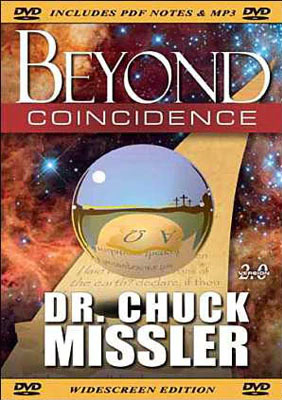For the Love of Codes
What child doesn’t love a good spy book, complete with clues and ciphers? As young people, we delighted in passwords and vocabulary that only our best friends understood. We invented secret codes and used them to pass messages that nobody else could read. Some of us liked code-making and code-breaking so much that we became cryptologists as adults.
Not only do we love codes, but sometimes they’re indispensable. When all other forms of communication breakdown, ships can still signal each other in Morse code with flashes of light. Prisoners locked behind walls of silence can tap tap their way to knowledge about each other. Children can know a stranger was not sent by Mom to pick them up, because the stranger doesn’t know Mom’s code phrase. Codes have many real-life uses.
Let’s pretend I have a necklace of black and white beads, and the string breaks so that beads spill all over the floor. I get a needle and another string, and I use the needle to scoop the beads onto the string. It’s much easier than trying to scoop them with my large fingers, and I finish fairly quickly.
I know Morse code, and as I look at the beads on this string, I notice that the black and white can substitute for dots and dashes. I see that the beginning of the string has two black beads, which I see as a “dot dot” for the letter I. It’s followed by a white bead then a black bead — “dash dot” the letter N. There’s a white — “T” — then four blacks in a row — “H.” Next is an E, then a B, E, G, and I. As I begin to write down the letters implied by this black-and-white Morse code, I find a sentence forming. It says, “In the beginning God created the heavens and the earth.” I just scooped them onto the string, and they came up off the floor forming that sentence.
Of course, this is an absurd scenario. The chances of winning the lottery are a reasonable 1 in 300,000,000, or 3 x 108. If there are 347 beads, the statistical chance that they should appear in any specific sequence is 1 in 2347, or about 3 x 10104, a 10 with 104 zeros after it. This is a ridiculously improbable number. However we look at it, it’s absurd that this lettering occurred by chance. We intuitively recognize this, even without any mathematical sophistication. Immediately, we start considering that some sort of design must have been involved. We can believe that my unconscious mind put the words together while I slid the beads on the string, or we can contemplate that a miracle has just taken place. We do not for a moment believe the beads spelled out that sentence in Morse code by random chance.
While nothing is considered impossible in statistics, merely “highly improbable,” there has to be a point in mathematics where it’s justified to call it quits and say enough’s enough. In his 1962 book Probabilities and Life,[1] mathematician Emil Borel suggests that probabilities become too negligible to worry about on a cosmic scale after 1 in 1050. Odds of 1 in a trillion (1012) may not get many investors, but it’s still remotely possible. On the other hand, a chance of 1 in 1050 is inconceivable; it’s defined as absurd.
We recognize that random chance produces chaos and disorder, the equivalent of black and white beads spilled aimlessly across the floor. We also recognize that order and language are the result of purposeful intent. If my black and white beads form a full sentence, we recognize that intelligence must be at its source.
Our world is filled with codes in one form or another. DNA is a digital code that gives information to each of our cells on how and when to develop, shaping every form of life on the earth. It is not a string of random black-and-white beads, but an extensive, carefully written program. The universe is not chaotic and unpredictable. Instead, the laws of physics and the unique characteristics of our planet have allowed life to thrive. Researching and understanding the miracle of life and the order of the universe is one of the deepest passions of humanity. Ultimately, we have access to an integrated message from outside the dimensions of space-time itself, and in its pages we find the answers to the biggest question of life.
What does the universe tell us about its Creator, and what has He done to reveal Himself to us? Above all else, that is what this little book is all about.
Information Versus Noise
We generally recognize the difference between order and disorder. A code is ordered. A communication signal is ordered. They are both meant to be recognized and interpreted and understood, because their very purpose is to transfer information. Language is ordered. Music is ordered. As language is garbled or music becomes chaotic, the result is noise. The transfer of information has ceased, and cacophony has taken its place.
In science, it’s exceptionally important to distinguish the difference between real information and “noise.” Let’s say a mining company wants to know the concentration of cadmium, lead and arsenic in the rock before they start digging, because they don’t want these toxins to leach into the local rivers. They take samples of the rock and send the samples to a local lab where the rocks are tested using sensitive instruments. Let’s say that one of the instruments has a high background noise for cadmium. That is, the instrument gives a reading of 2ppm (parts per million) cadmium even when testing completely pure water. The testing lab knows this. They’ve tested the instrument repeatedly, and they know they have to account for this background noise before making their report on the cadmium concentration in the rock. With each run, they test a “blank” sample of pure water. When their instrument reads 15ppm of cadmium in a sample, they minus the blank’s reading for the background noise and report 13ppm cadmium.
In science, “noise” is the opposite of true information. Noise is disordered and chaotic. In Greek, the word chaos means “disordered” or “void,” and the word cosmos means “order” or “arrangement.” Noise exists everywhere, and it can cause confusion. It requires purposeful energy to make and keep things ordered — to create true information and separate it from the noise.
An engineer trying to design a communications system has the job of improving the signal-to-noise ratio. The engineer wants to get as much signal and as little noise as possible so that information can be communicated clearly with little confusion. Anybody who has used walkie talkies knows the difficulty in trying to understand somebody when the words are drowned out by hissing and crackling sounds.
The same principle applies in anything we try to accomplish; we have to put in effort to make things ordered. The second law of thermodynamics states that the randomness of a system — its entropy — will always increase in a closed system. No machine is perfectly efficient. The directed energy used to make the machine whir gets randomized and energy melts away into the universe and is lost for any useful purpose. We spend a weekend cleaning up the garage. How long does it stay that way? The kitchen. The hall closet. We spend purposeful, thought-out energy making order, but randomness takes over.
Information scientists use both deterministic and stochastic models to make predictions. In deterministic models, the end result is predictable based on known parameters and initial conditions. Three plus two equals five. If we sell seven shirts for $5 each, we will gross $35. A stochastic model, on the other hand, includes a random variable. We might know the parameters and initial conditions, but because of this random variable we get different outcomes. We can set certain bounds for that variable and so know that our results will fall within a certain range of results, but we aren’t sure exactly which it will be. For instance, we might know how many people will come into a room, and we might know their ages and their incomes, but we don’t know their heights. We only know that they are most likely between 4’7” and 6’11” and we make our predictions based on that distribution range.
Elusive Randomness
This leads to the issue of pseudo-random numbers. It may be surprising, but it’s almost impossible to create truly random numbers, and yet scientists sometimes need them. In 1955, the Rand Corporation in Santa Monica published a book called One Million Random Digits, with 100,000 Normal Deviates.
The average layman would look at that and laugh, because the book is just lists and lists of random numbers. The untaught civilian would consider such a book completely ridiculous, but there are people who pay good money for random numbers. It took the most advanced company of the day to generate this product and to give buyers the assurance that the number lists were truly random.
The Rand Corporation had access to the most powerful computers of the day, and the authors had to make sure that these numbers had no symmetry, no predictability, no patterning of any sort. They washed the numbers to ensure there was no evidence of design anywhere. It served as a useful tool for certain scientists and laboratories that needed a supply of random numbers.
Even today, one of the most complicated things a computer can do is provide a truly arbitrary number. It turns out that any procedure used to create random numbers isn’t really random. It may look like a random list, but the numbers are actually pseudo-random because some pattern or formula was used to create them. Yet, completely random numbers are valuable for experiments in certain fields of study, so the Rand Corporation’s book was a serious tool for serious scientists at that time.
Ironically, the defining characteristic of a collection of random numbers is the total absence of design. We live in a culture that attributes design to randomness, and we have no clue what true randomness looks like. It’s astonishing to realize that we live in a culture that has ruled out the concept of design and gives randomness credit for every fine-tuned machine in nature. The human brain functions as a result of one of the most elegant designs on the earth, and we attribute that design and all other organic designs to nothingness, to absence, to the unsystematic bouncing of atoms. I want you to understand the absurdity.
Intellectuals are career-bound in an environment in which they jeopardize their careers if they speak of intelligent design in the order of nature. There are pleasantly refreshing exceptions. People like Stephen Meyer of the Discovery Institute and his colleagues Phillip Johnson, William Dembski, and Michael Behe Tawyers, mathematicians and biochemists — recognize the implicit design in the natural world. Whether or not they are Christians, they have championed the view that intelligence always lies behind anything designed. That is, when we find clever engineering in nature, it is a fingerprint of Somebody’s intelligence.
Forensic scientists have long recognized the clues that separate a murder from an accidental death. If a man is found with a knife tip lodged in his rib, it’s reasonable to suggest foul play. Any casual viewer of a crime investigation show knows that DNA and particulates and bone chips can lead to the specific perpetrator of a crime, let alone the fact that human purpose was involved. If a man is found with ten knife wounds in his back, it’s safe to say somebody else was involved.
The Scripture talks about chance in a very strange way:
The lot is cast into the lap; but the whole disposing thereof is of the LORD.
— Proverbs 16:33
In other words, in a world where everything creative is attributed to hit-and-miss chance, true randomness might not exist after all.
Notes:
- Borel, E. (1962). Probabilities and Life. New York: Dover. ↩







